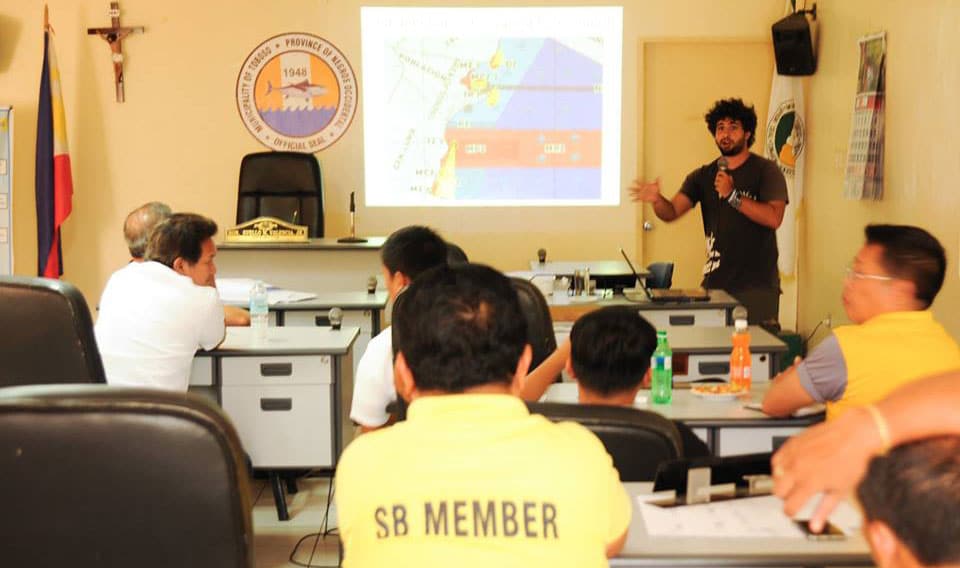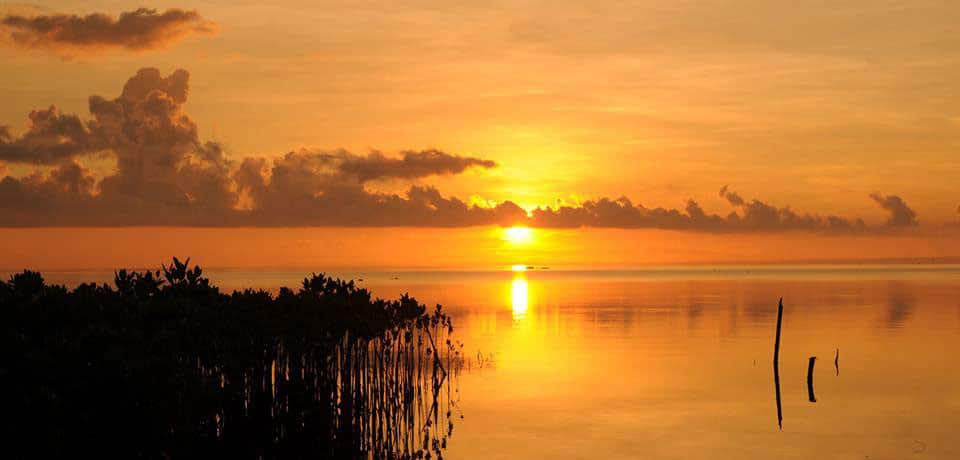Toboso is a rural area in the province of Negros Occidental with almost no prior marine habitat usage outside of fishing. In July of 2016, Conservation Diver Trainer Rahul Mehrotra joined the “Worldreef, Toboso” organization to assist in expanding the baseline knowledge of biodiversity in the area and conduct preliminary assessments of the habitats in the vicinity of the MPA.
Much work had already been conducted by Worldreef in initiating and processing the MPA, working closely with the local governmental authorities. Yet, a large number of criteria were still required to maximize the case for the creation of the MPA, and surrounding Marine Reserve.
The job of Rahul, first and foremost, was the establishing of an accurate database of flora and fauna in the area. An assessment and broad management plan of the habitats in the area was carried out according to the methods covered in the Conservation Diver courses.

Much talk had also gone into the economic aspects and opportunities of the MPA and surrounding zonation, including particular work with the Department of Agriculture and other independent groups regarding fisheries management and restocking opportunities. Focus is also being put on attractive species to tourism with what is available in the area, which has proven to be a challenge given the severe over-fishing the region has faced.
After a few days of focus on biodiversity assessment and taxonomic restructuring of the known database, the team at Toboso focused efforts on conducting transect surveys to assess the health and diversity of reefs in the area.
The transect methods were adapted from the Conservation Diver syllabus to address key focal points in the area. These were to identify species key to the 3 main goals of the assessment, ecological value, economic value (fisheries), and potential economic value (tourism).
Substrate surveys indicated that certain key areas show high diversity and relatively high coral cover, for the area, with some places showing over 40% coral coverage. A number of the corals deeper than 3 meters had shown recent signs of bleaching stress, with isolated pockets of bleached and diseased corals, but largely looked healthy. It is likely that the worst of the bleaching to hit these reefs occurred weeks to months prior to these surveys being conducted, and with the start of the cooler rainy season in the area, we hope the remaining corals get some relief from their ordeal.
Invertebrate and Vertebrate surveys looked far less promising, with very little sign of large fish life or diversity. Overfishing in the area over multiple years has led to a severely understocked fishery with only 3 individual fish larger than approx 30cm, being witnessed in over 15 surveys. Thats 3 fish, total. All others are juveniles or small species and diversity is deemed to be lacking.
Invertebrate surveys agreed with findings of the vertebrate surveys in that any organisms with fishery value appear to have been fished to near eradication. Key examples are the Giant Clams and Sea Cucumbers, both of which show severe depletion at all locations. A total of 3 giant clams were witnessed in all surveys, and all were at depths greater than 3 meters. Based on internal discussions, the precise location of these clams will be withheld to promote their survival

To conclude on a positive note, only a single transect saw signs of Crown of Thorns, with 3 being found along a 50 meter line. The current view of the ecosystem is one of possible high diversity and health, but would require strict and immediate measures to be put in place to allow the fisheries to recover. Patrol boats have been acquired for the use of monitoring the MPA area when it comes into effect, which should assist in the enforcement yet to come. The marine environment, and all its ecosystems here at Toboso shows incredible potential but requires a lot of help and restoration to reach that potential.
A glimpse of the past and a look to the future of the coral reefs of Toboso.
The research and conservation carried out at Toboso during this expedition has concluded yielded a report of findings in due course. During the final week of the expedition, a number of key events took place that provided evidence for the dire need for restorative work to be carried out at Toboso, and the possible beginnings of a future regular collaborative effort.Much of the time in the final week had been spent compiling and analysing data on the health, and importantly, location of much of the reefs in the region. This data additionally resulted in a number of key, important records to add to the growing list of species recorded from the region.
During the proposition of the MPA, a number of local and regional authorities demanded a minimum species inventory of 100 species to qualify the region for an MPA. The source of this rather absurd figure was never found, but regardless, the team has since catalogued a total inventory of 3 times the minimum value, reaching well over 300 species, with many more to be recorded.

A presentation and meeting with the local municipality and number of stakeholders by the Conservation Diver team was largely deemed to be a resounding success with much discussion and agreement on the need to alter current practices and amend MPA proposition as it currently stands. Full details can be found in the report.
During surveys in the local area, a large fish trap and cage was found showing limited success and arguably more harm than good. This particular trap was found less than 5 meters from the edge of the local coral reef, and represents a common practice in the region. Relative to other methods used in the Philippines, this method has the potential to be far less disruptive, however location and implementation must be reviewed in an area where edible fish stocks have been almost completely depleted. Given the enormous size of the local ‘menu’, this poses dire consequences for local fisheries.
Finally, 48 hours prior to departure, the team was contacted at dawn about a large sunfish (Mola mola), that had been incidentally caught and had unfortunately perished in the net during attempts to free it. The large oceanic fish has not been seen or landed in Toboso for a number of years, and further hints at the problems of insufficient infrastructure to manage such issues.
The official report is publicly available and will hopefully help to promote tourism activity over fishing in Toboso. A number of difficult steps are outlined, and need to be realized, if the incredible life and potential of Toboso is to be saved.
“As it currently stands, the marine environment at Toboso is in dire need of effective restoration as much of the life has already been lost, and what is left may soon follow. The environmental and economic gains of this restoration could be substantial, should stakeholders work together to capitalize on it.”
[su_custom_gallery source=”media: 374,386,376,381,382,384,385,380,387,379,378″ width=”400″ height=”400″]


